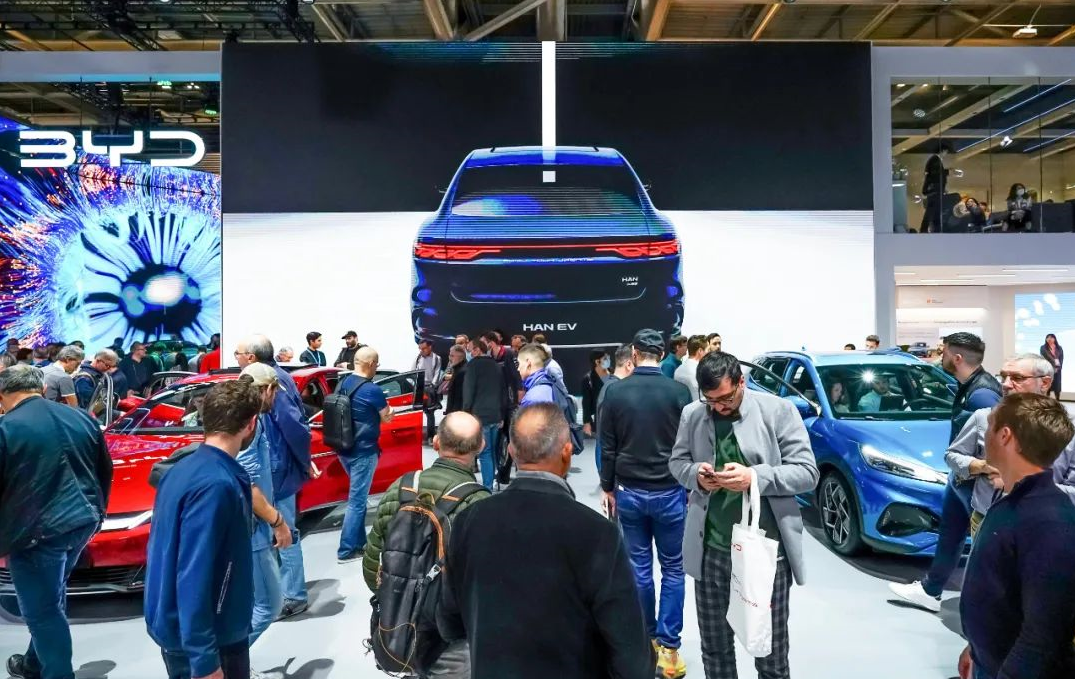Article by Jingtao Wu
In the field of new energy, we have achieved a remarkable turnaround!
On October 17th local time, one of the world’s five major auto shows, the biennial Paris Motor Show officially opened. This is the first time that the Paris Motor Show has been held in four years since it was canceled in 2020 due to the pandemic.
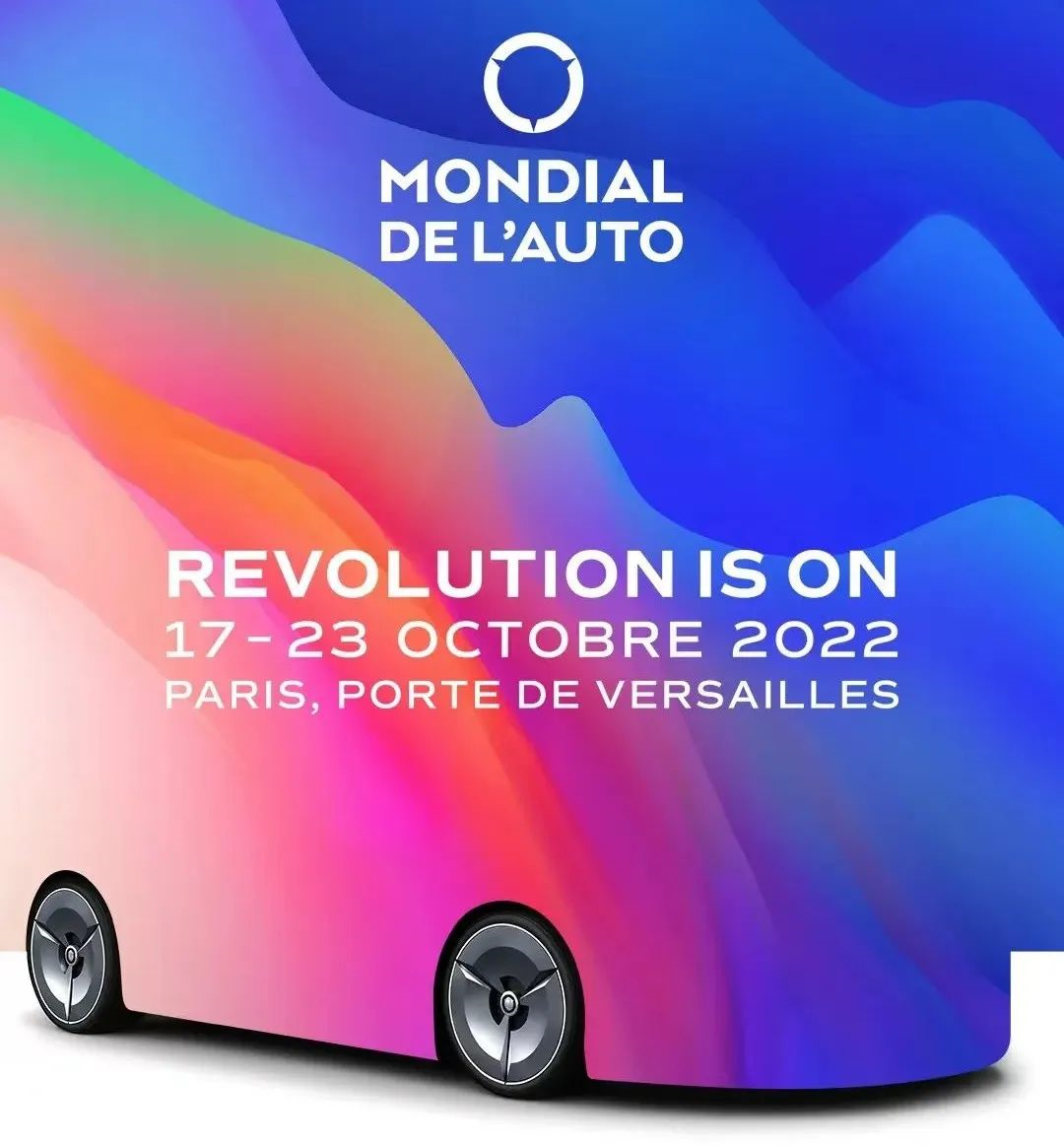
Although the scale of this year’s Paris Motor Show has significantly shrunk compared to previous years due to the impact of the pandemic and international situation, many major foreign car companies are absent from this year’s exhibition. However, for domestic consumers and media, this year’s Paris Motor Show is still worthy of attention.
With the specific plans of the EU and France to ban sales of fuel vehicles, as well as support policies for new energy vehicle models, many domestic brands have keenly discovered the opportunities in the European new energy market and have made high-profile appearances at this year’s Paris Motor Show.
We often say that the new energy field (especially electric vehicles) is the best opportunity for our domestic-brand car companies to overtake competitors by changing lanes.
And this year’s Paris Motor Show is a very rare window in recent years, allowing Europe and even the world to see the achievements we have made in the new energy field in recent years, and allowing us to make horizontal comparisons and see more comprehensively our current level of development in the new energy field.
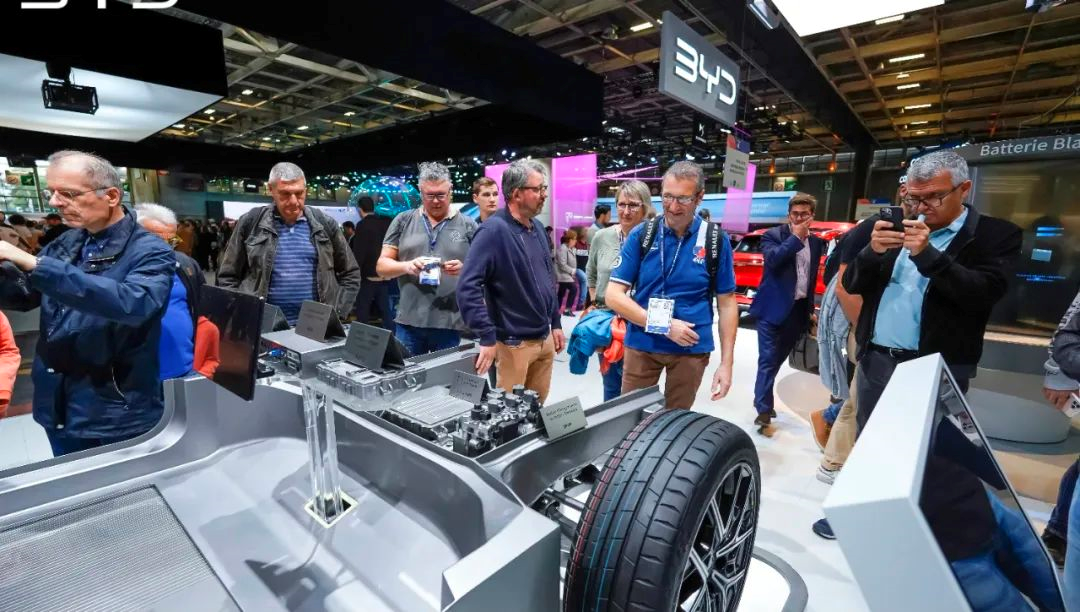
In today’s article, we will take stock of the Chinese car companies’ new energy vehicle models showcased at the Paris Motor Show.
BYD
Entering 2022, BYD is undoubtedly the leader in the domestic market. In September, BYD’s monthly sales exceeded 200,000 units, surpassing Volkswagen and topping the passenger car sales rankings that month.
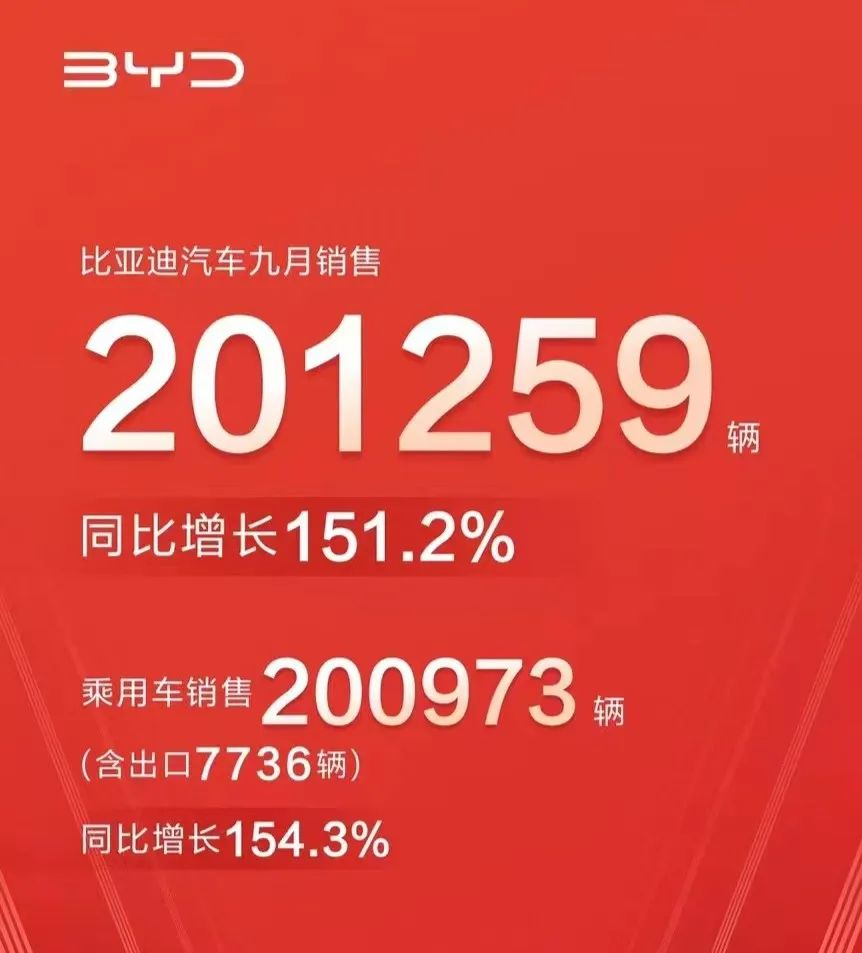
At the same time, BYD has also started to fully enter the international passenger car market this year. First, it announced entry into major Asia-Pacific countries such as Japan, Australia, and New Zealand. It later announced entry into ASEAN countries such as Thailand, Cambodia, Nepal, Laos, Malaysia, and Singapore.
In October, BYD continued its overseas journey and announced entry into the passenger car markets of India and Mongolia.
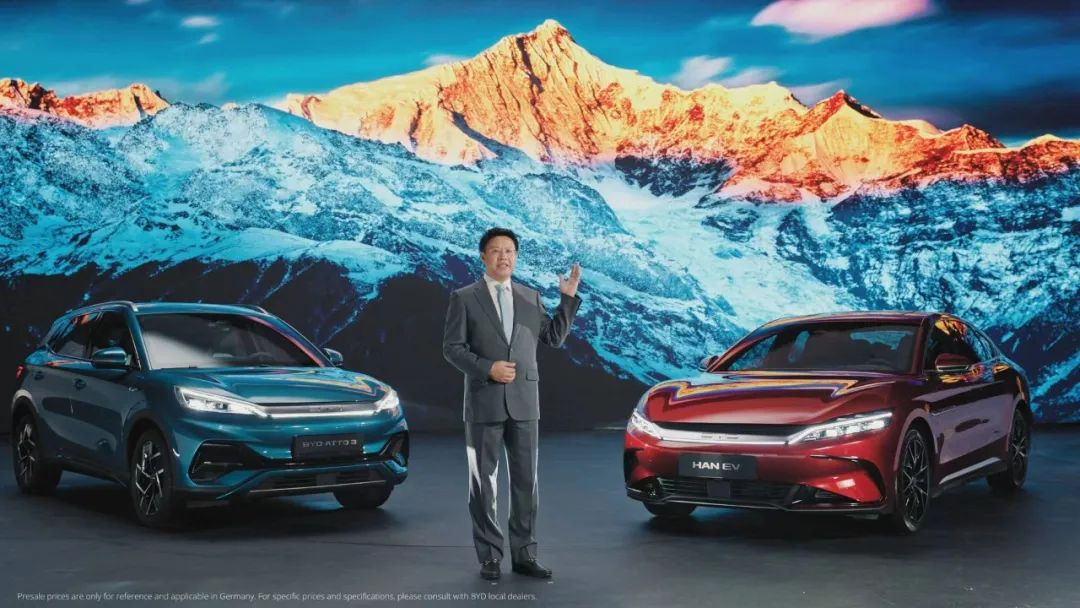 In addition to making a comprehensive foray into the overseas passenger car market, BYD is also planning to build new passenger car factories in Thailand and India in the near future. The plan for the Thai factory is progressing smoothly, with formal agreements signed for land acquisition and construction.
In addition to making a comprehensive foray into the overseas passenger car market, BYD is also planning to build new passenger car factories in Thailand and India in the near future. The plan for the Thai factory is progressing smoothly, with formal agreements signed for land acquisition and construction.

As BYD’s overseas journey continues, Europe, which is quite proactive in promoting new energy vehicles, is naturally an essential and important part of BYD’s overseas market blueprint. Earlier, the 2023 Geneva Motor Show was declared canceled, so BYD attaches great importance to the Paris Motor Show this time.
BYD exhibited three models at the Paris Motor Show this time, including the Han EV, Tang EV, and Yuan Plus (ATTO 3).
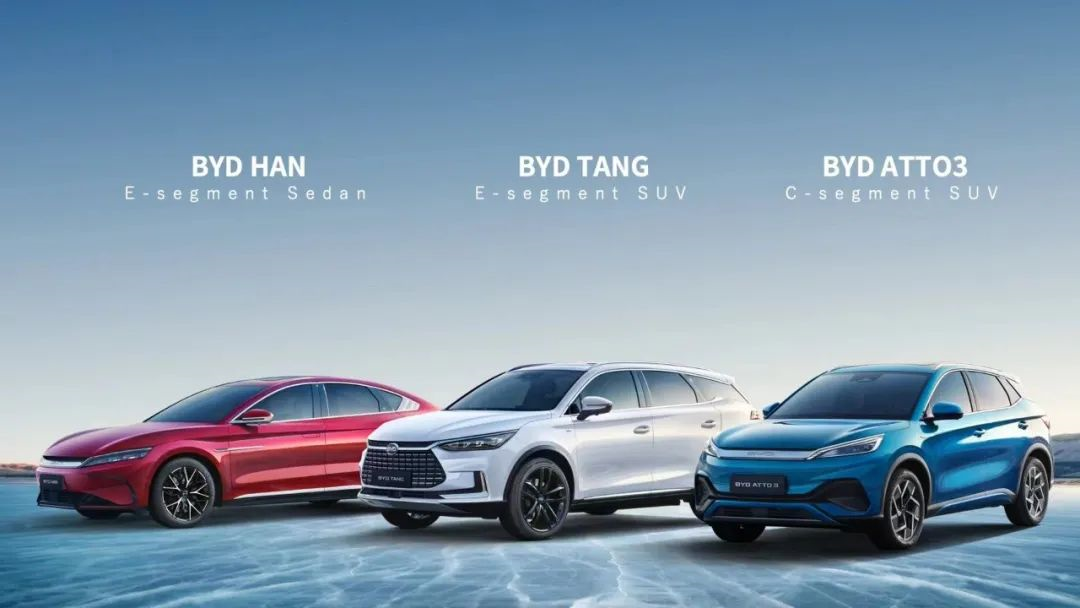
Han: The BYD Han EV exhibited at the Paris Motor Show basically continues the appearance of the Han creation version in China, but with adjustments in the detail design.
The Chinese LOGO “Han” is no longer used on the front of the vehicle, but instead, it is changed to “BYD.” The Chinese label “Han” on the back of the vehicle is also changed to the word “HAN.”
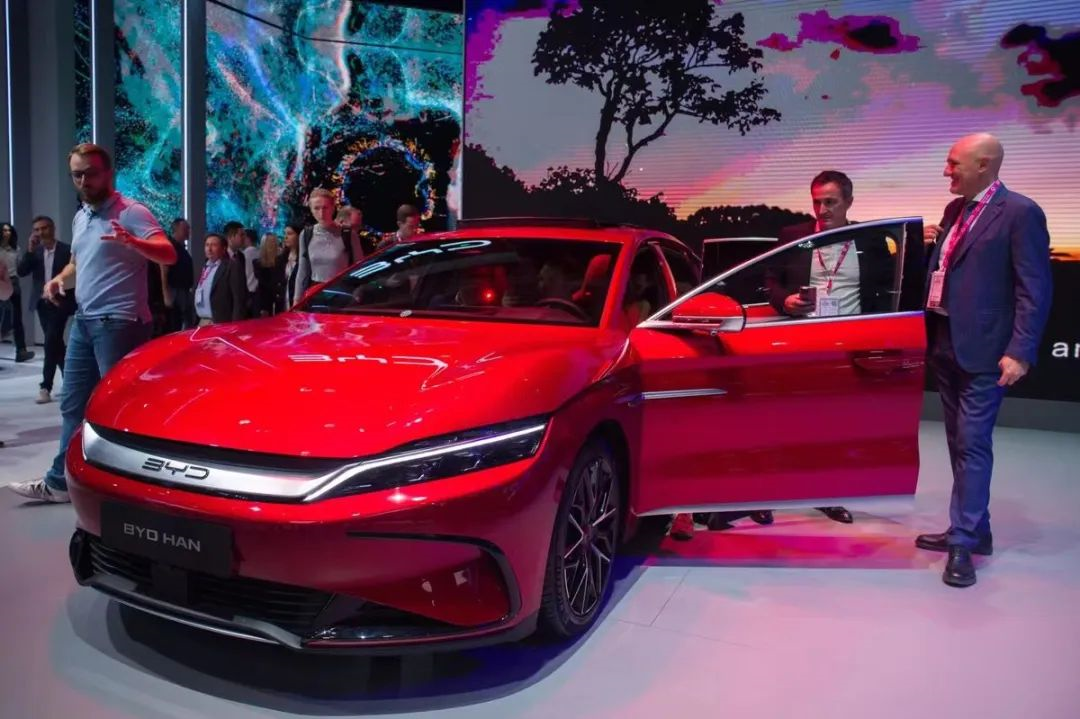
From the “3.9S” on the tail label, it can be seen that the corresponding domestic version of the vehicle is the Han EV four-wheel-drive version.
The total power of the motor is 380 kW, the total torque is 700 N-m, the driving time of 0-100 km/h is 3.9 seconds, and the CLTC cruising range is 610 km.
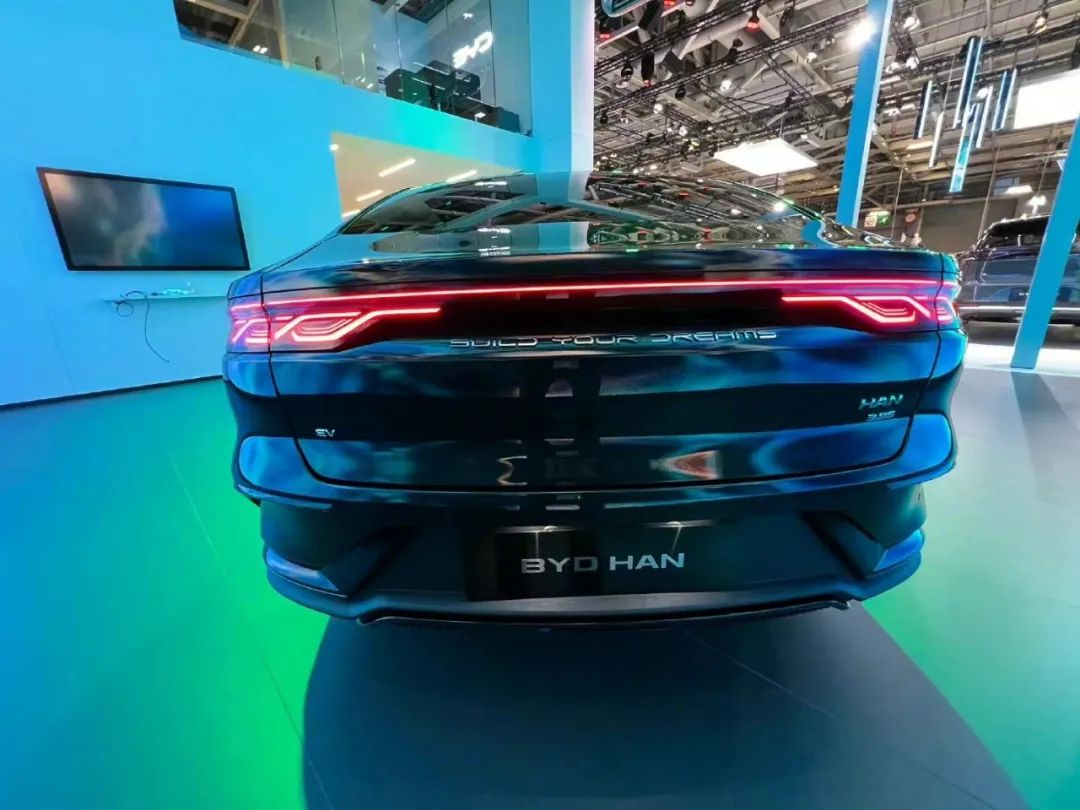
On September 28th, BYD announced that the Han had started pre-sale in Germany, with a pre-sale price of 72,000 euros (approximately RMB 510,000).
Correspondingly, the entry-level BMW 5 Series model, the 520i, is priced at 53,700 euros (approximately RMB 380,000) on the official website in Germany.
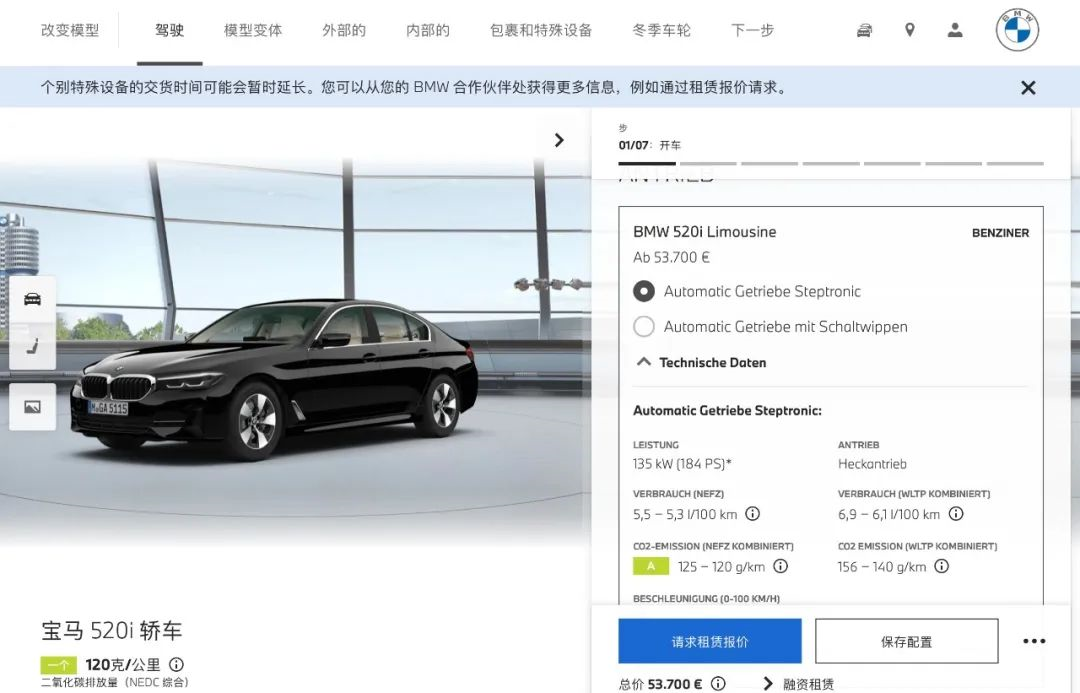 The entry-level model of Mercedes EQE, a pure electric vehicle in the same class as Han EV with four-wheel drive performance, is available on the German official website for 66,400 Euros (about RMB 470,000). The AMG EQE 43 4MATIC model with the same performance as Han EV four-wheel drive is as high as 103,900 Euros (about RMB 730,000) on the official website.
The entry-level model of Mercedes EQE, a pure electric vehicle in the same class as Han EV with four-wheel drive performance, is available on the German official website for 66,400 Euros (about RMB 470,000). The AMG EQE 43 4MATIC model with the same performance as Han EV four-wheel drive is as high as 103,900 Euros (about RMB 730,000) on the official website.
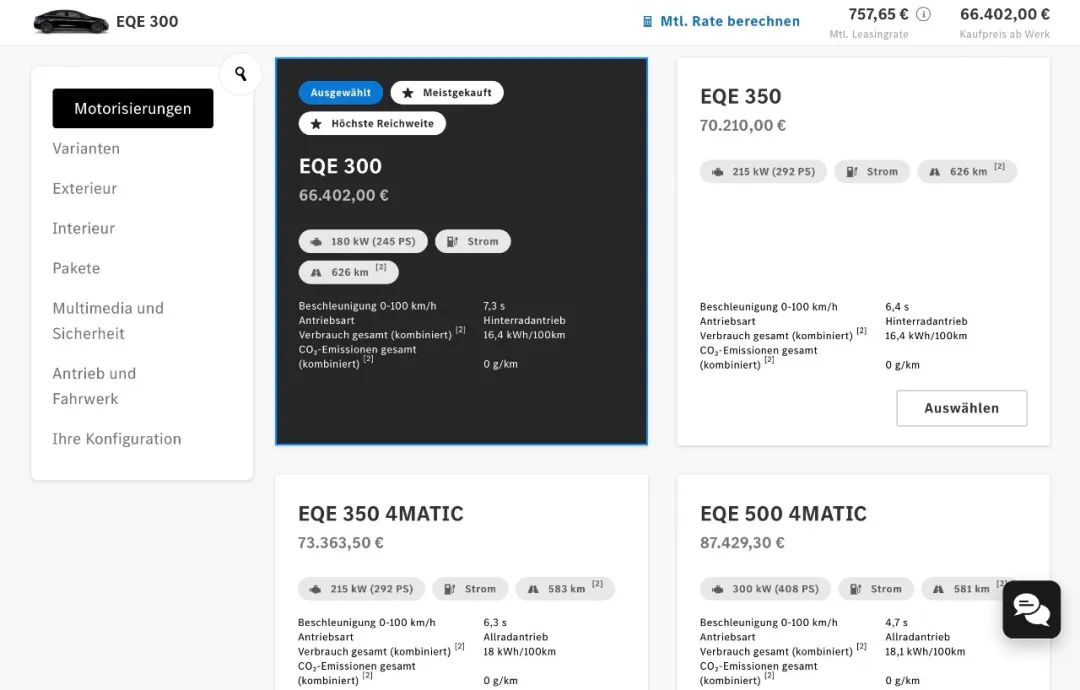
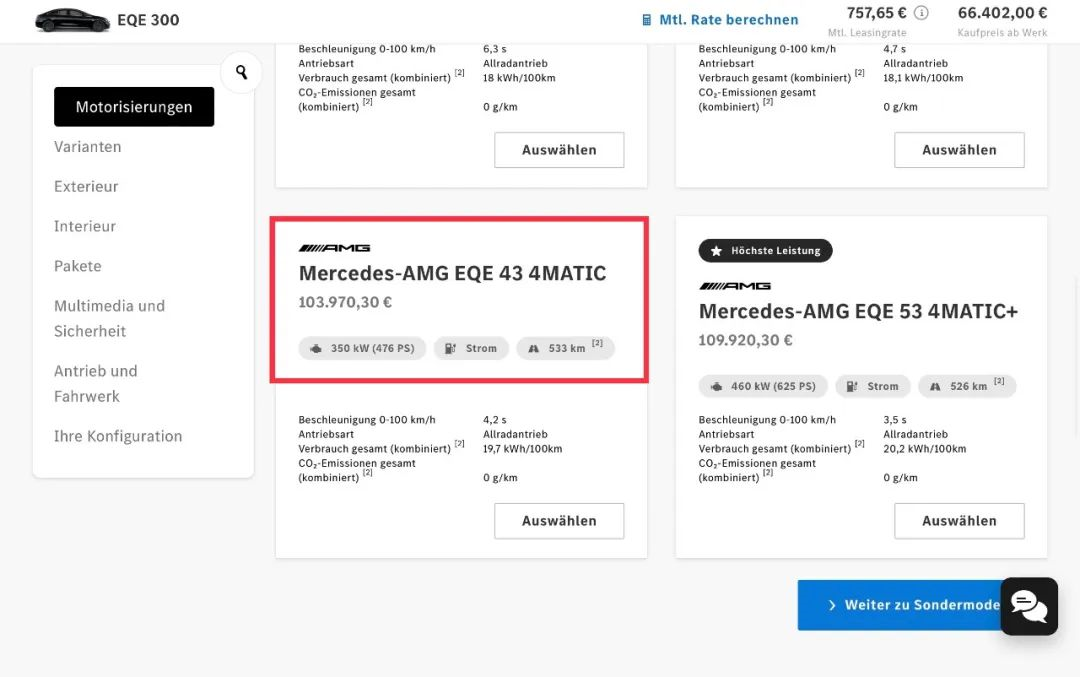
The main change for the European version of Tang EV is in the front face, which continues to adopt the Byton family’s Dragon Face 3.0 design language, but without the full enclosed design of domestic Tang EV, a scaled-style hexagonal grille is used instead.
Other detail changes are similar to Han EV, with adjustments to the logos.
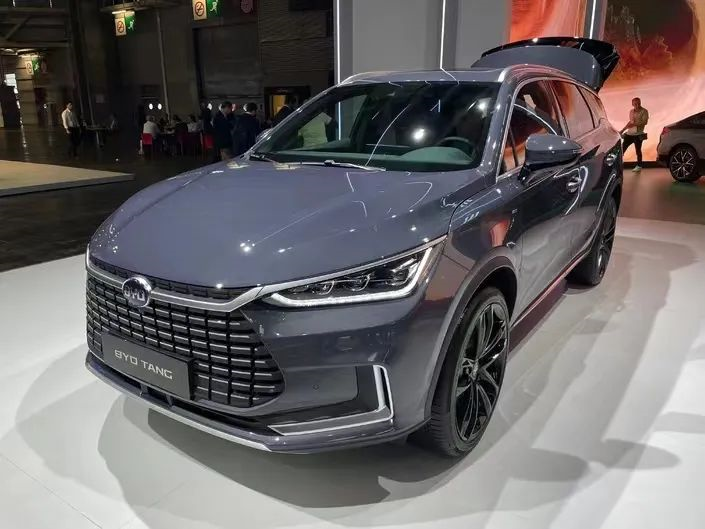
Tang EV’s price in Germany is the same as Han EV at 72,000 Euros (about RMB 510,000), while the starting price of the BMW iX3, a pure electric SUV in the same class, on the German official website is 67,300 Euros (about RMB 47.7 million).
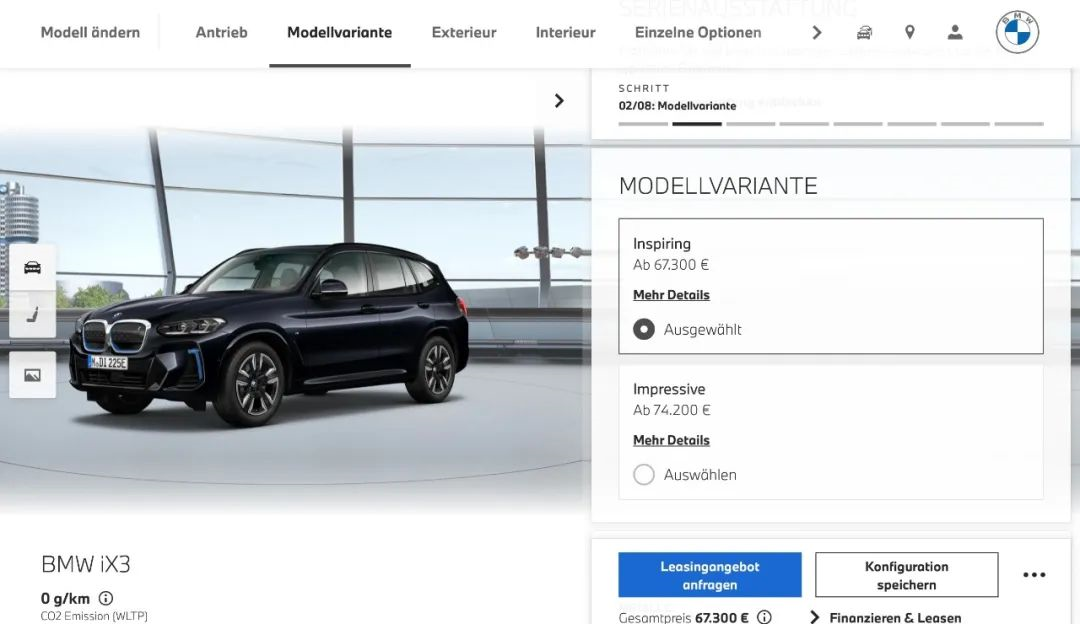
As the main model that BYD is pushing to the overseas market, Yuan Plus (ATTO 3) has appeared in many overseas auto shows and BYD brand conferences this year.
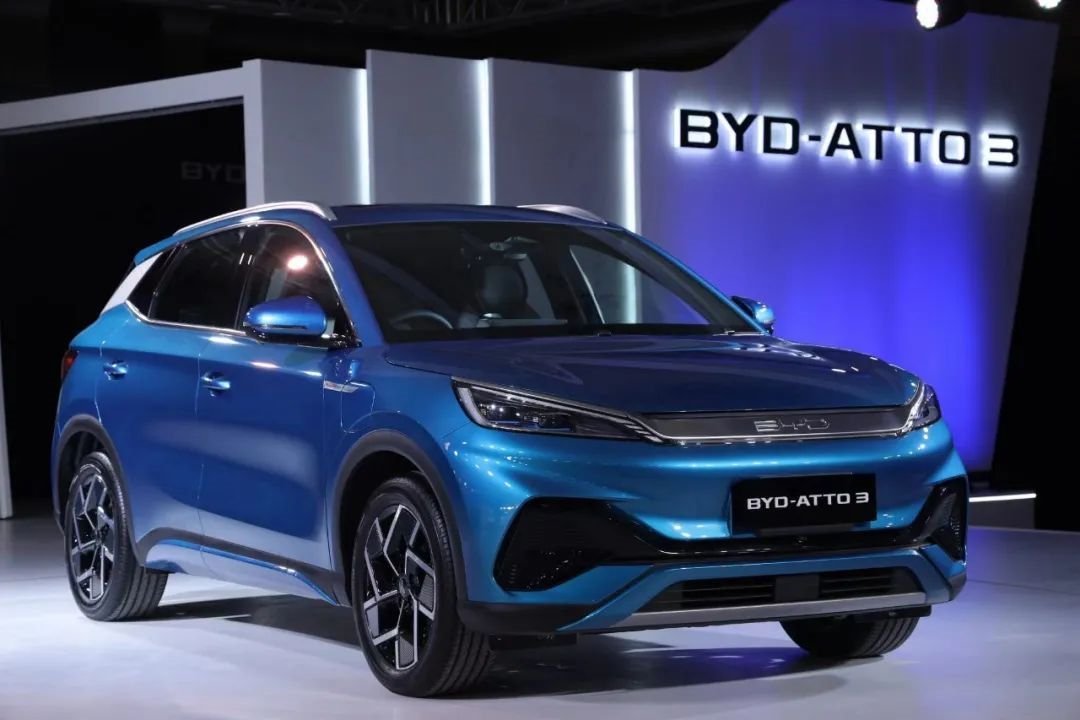
Regarding the price, Yuan Plus is pre-sold at 38,000 Euros (about RMB 270,000) in Germany, while the starting price of the BMW iX1, a pure electric SUV in the same class, on the German official website is 55,000 Euros (about RMB 390,000).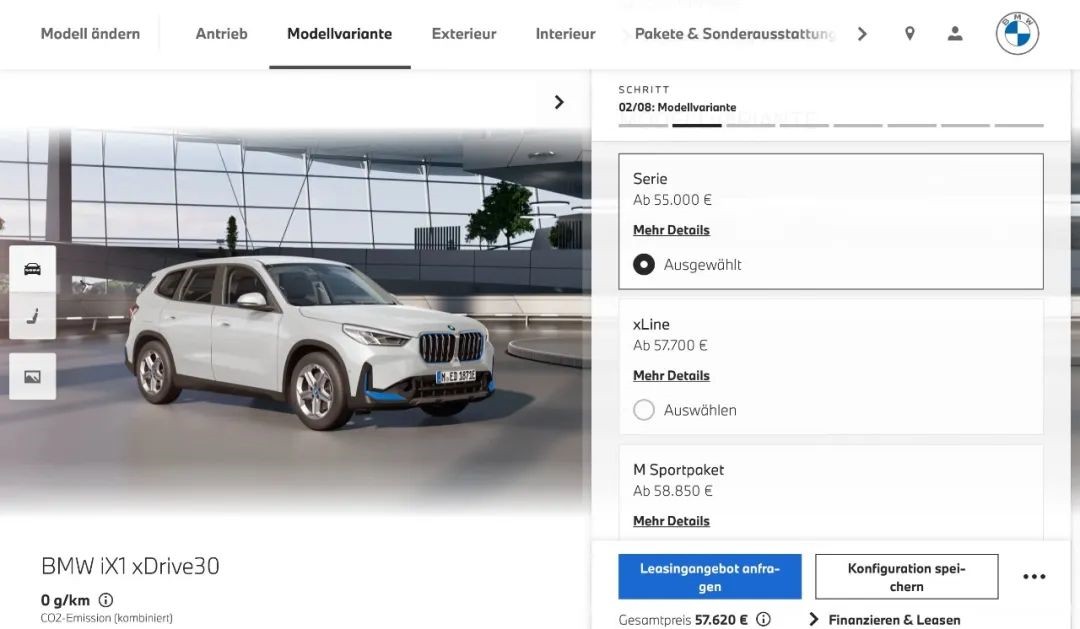
In the latest Euro NCAP safety tests, BYD Yuan Plus (ATTO 3) received a five-star rating.
After the Paris Motor Show, Yuan Plus (ATTO 3) will be delivered in multiple European countries, including Norway, Denmark, Sweden, the Netherlands, Belgium, Germany, France, and the United Kingdom.
In addition to the model release, at the Paris Motor Show event, Royal Dutch Shell, a global strategic partner of BYD, announced that it will open up the use of about 300,000 Shell charging stations to BYD European car owners.
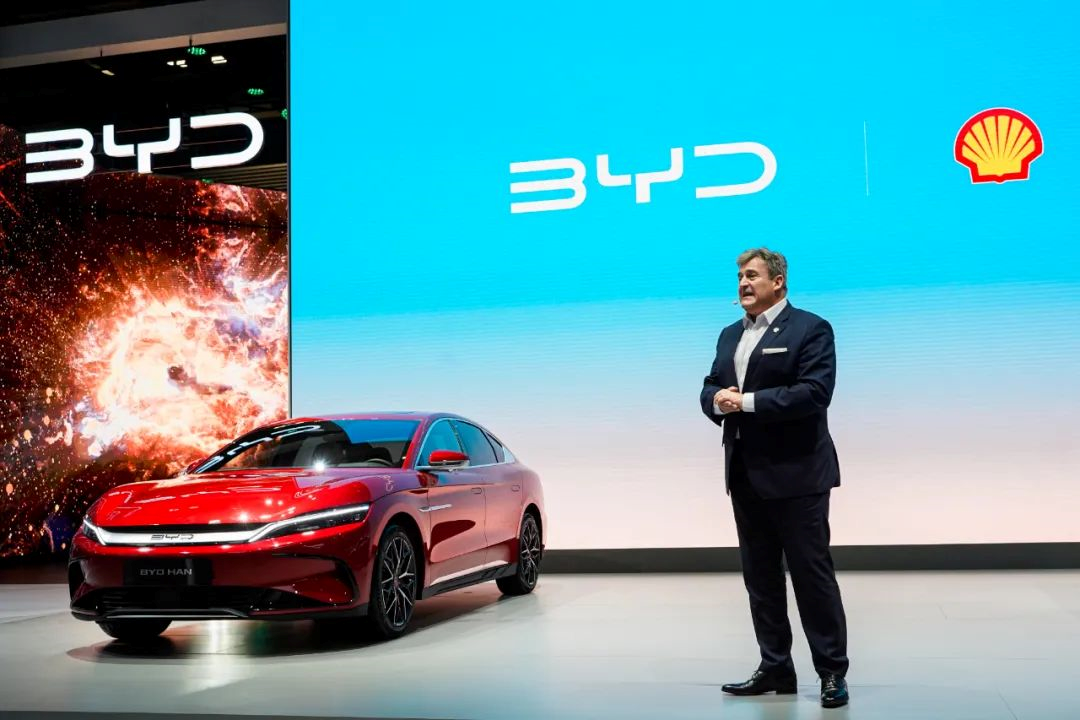
Great Wall Motors
Another domestic brand, Great Wall Motors, also places great importance on the European market. As early as the 2019 WEY brand third anniversary event, Great Wall Motors Chairman Wei Jianjun announced a new global strategy for the WEY brand that clearly stated that the WEY brand would enter the European and other global markets in 2023.
At the Paris Motor Show, Great Wall Motors’ WEY and ORA brands exhibited new energy vehicle models. Henry Meng, President of Great Wall Motors Europe, also stated, “Europe is the most important market for us outside China.”
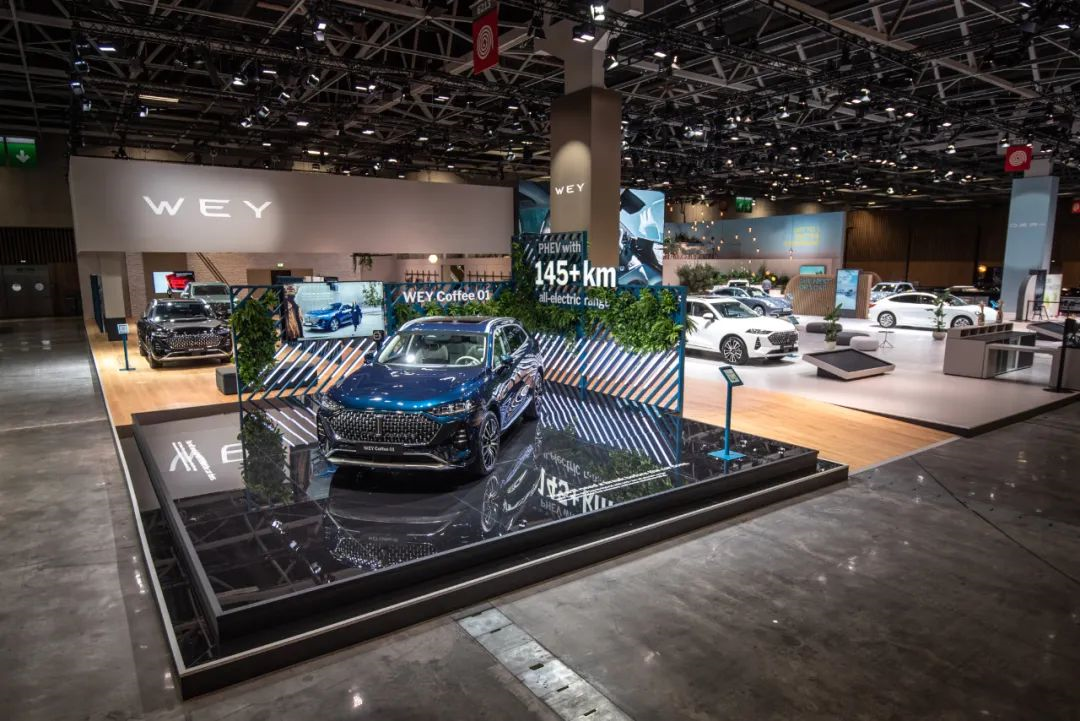
Firstly, regarding the WEY brand, WEY brought the Moka PHEV (Coffee 01) to the Paris Motor Show, and it was officially launched in the German market on October 17th.
The price is 55,900-59,900 Euros (equivalent to 3.95 million-42.3 million RMB), and the Latte PHEV (Coffee 02) will also be launched in 2023.
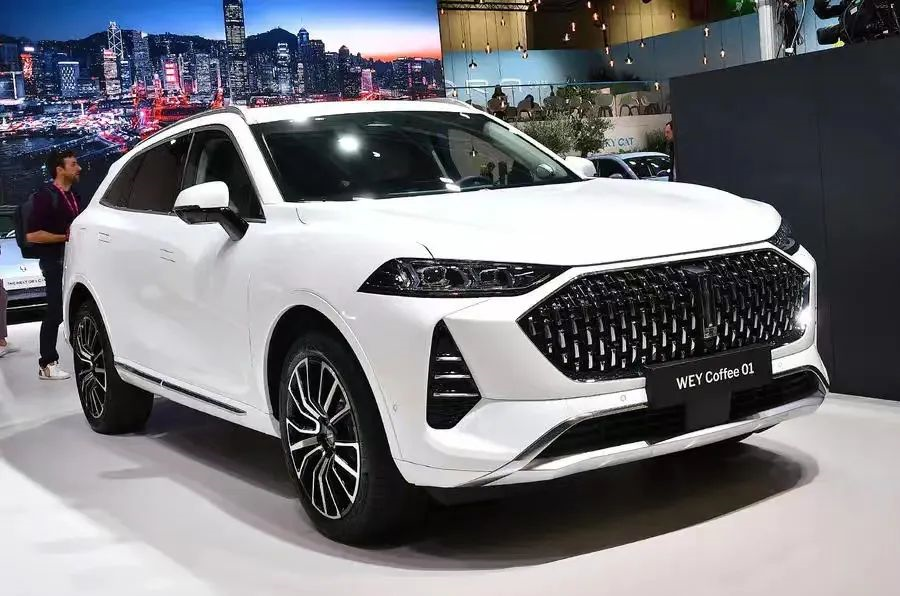 Longue-Vue has announced to foreign media that the Mocha PHEV (Coffee 01) has a pure electric range of 91 miles (146km) on the WLTP cycle, and combined with a 2.0L turbocharged gasoline engine, it can travel nearly 500 miles (804km) in total. Additionally, the car has an acceleration time of under 5 seconds from 0-100 km/h and a top speed of 146mph (235km/h).
Longue-Vue has announced to foreign media that the Mocha PHEV (Coffee 01) has a pure electric range of 91 miles (146km) on the WLTP cycle, and combined with a 2.0L turbocharged gasoline engine, it can travel nearly 500 miles (804km) in total. Additionally, the car has an acceleration time of under 5 seconds from 0-100 km/h and a top speed of 146mph (235km/h).
After the end of the Paris Motor Show, the Mocha PHEV (Coffee 01) will officially go on sale in Europe in November, starting in Germany. By the first quarter of 2023, they will open 60 sales and service outlets in Germany and gradually expand to other European countries such as Sweden, Spain, and Austria.
During the Paris Motor Show, Ora exhibited three car models, FunkyCat, FunkyCat GT, and the yet-to-be-named electric model, dubbed “THE NEXT ORA CAT” by the manufacturers. After the Paris Motor Show, “THE NEXT ORA CAT” will be the first to be sold in the Chinese domestic market.
Of the three models, FunkyCat was launched in the UK in May 2022, with a starting price of £30,495 (approximately RMB 246,000 yuan), and will gradually enter other European markets. It is expected that the car will be available in Israel and Iceland in 2023, but the details of FunkyCat’s configuration and price in the European market remain unclear.
Finally, in the Euro NCAP safety tests released in September, both the Ora FunkyCat and WEY Mocha PHEV achieved a five-star safety rating.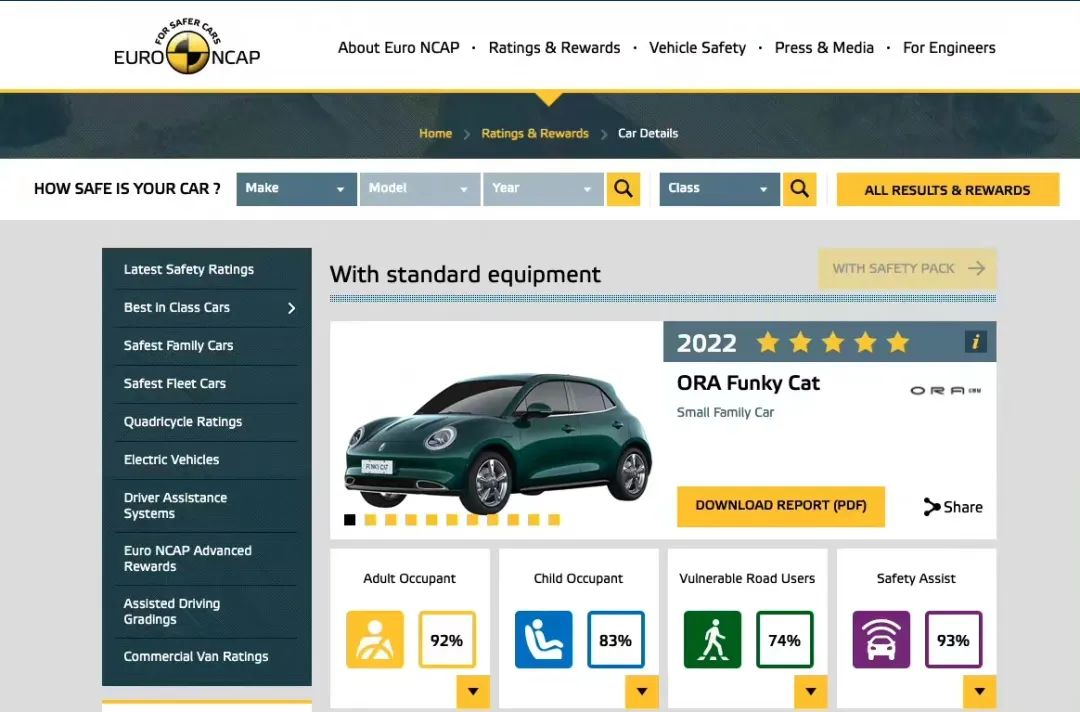
The two cars have a solid foundation for their launch in Europe by outperforming their peers like BMW i4, Kia Niro, and Citroen C5 X in the same test.
Leapmotor and SERES
In addition to traditional car manufacturers like BYD and Great Wall, two Chinese “new energy vehicle” brands, Leapmotor and SERES, also appeared at this year’s Paris Motor Show.
Leapmotor brought their electric midsize SUV C11 and their best-selling car – the electric microcar T03.
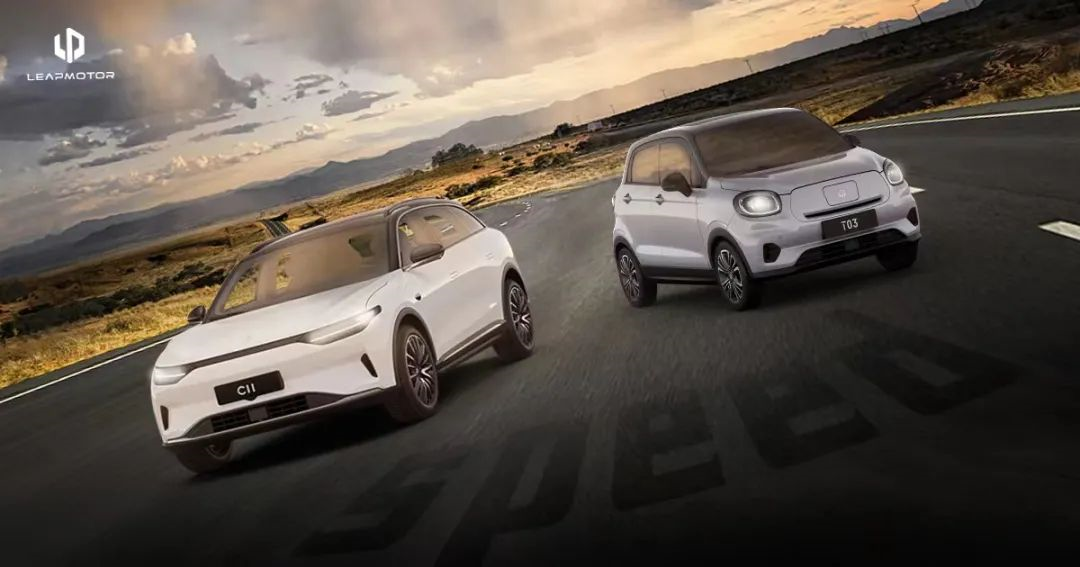
In September, the first batch of Leapmotor T03 was exported to Israel. This was the first export car model of Leapmotor, indicating that they are officially expanding overseas. T03 has also been certified in the form of a complete vehicle by the European Union, obtaining sales licenses for the European market and can now be officially registered in all EU countries.
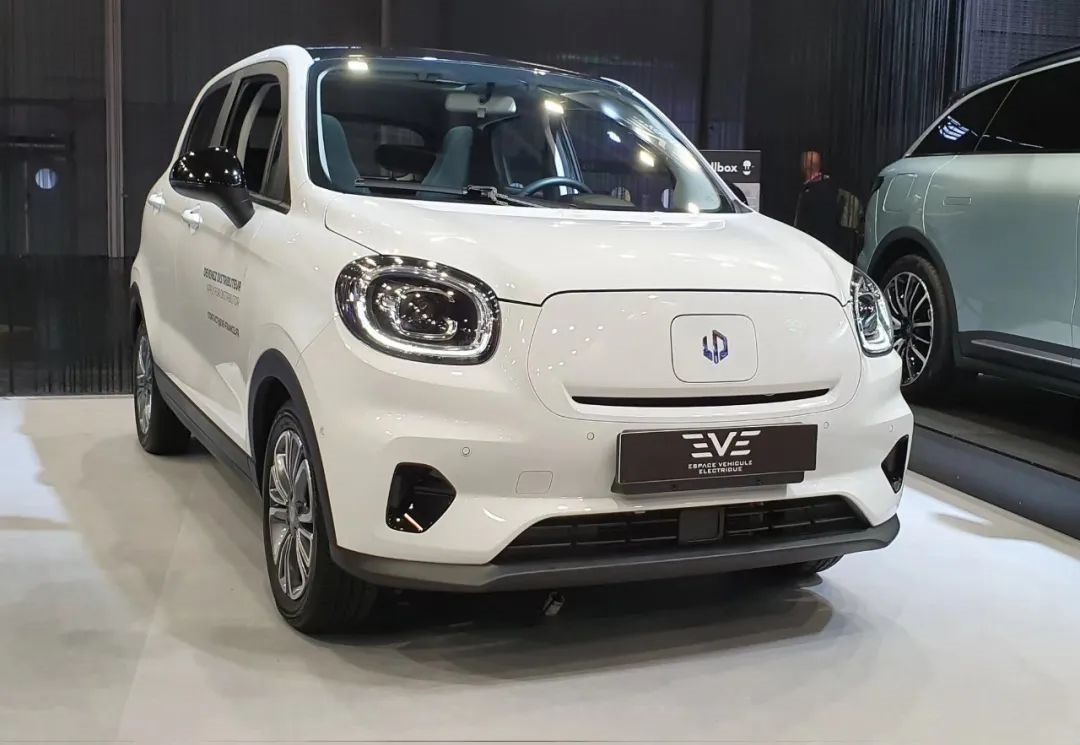
SERES brought their compact SUV iX3 (SERES 3) and their medium-sized range-extended SUV SF5 (SERES 5). Many people may be familiar with SF5, which has close ties with Huawei. The current Wanjie M5 is closely related to this model.

iX3 (SERES 3) maybe relatively unfamiliar to everyone, and it’s a compact-sized SUV that hasn’t been launched in China. The overall appearance is very similar to traditional fuel cars. According to previous reports, iX3 will provide two power versions – range-extended and pure electric.
 At the configuration table of iX3 (SERES 3) at the auto show, it can be seen that the starting price of the new car in Europe is 36,900 euros (approximately 261,000 RMB), with a maximum power of 120 kW and a 53.7 kWh ternary lithium battery, and a WLTP pure electric range of 329 km.
At the configuration table of iX3 (SERES 3) at the auto show, it can be seen that the starting price of the new car in Europe is 36,900 euros (approximately 261,000 RMB), with a maximum power of 120 kW and a 53.7 kWh ternary lithium battery, and a WLTP pure electric range of 329 km.
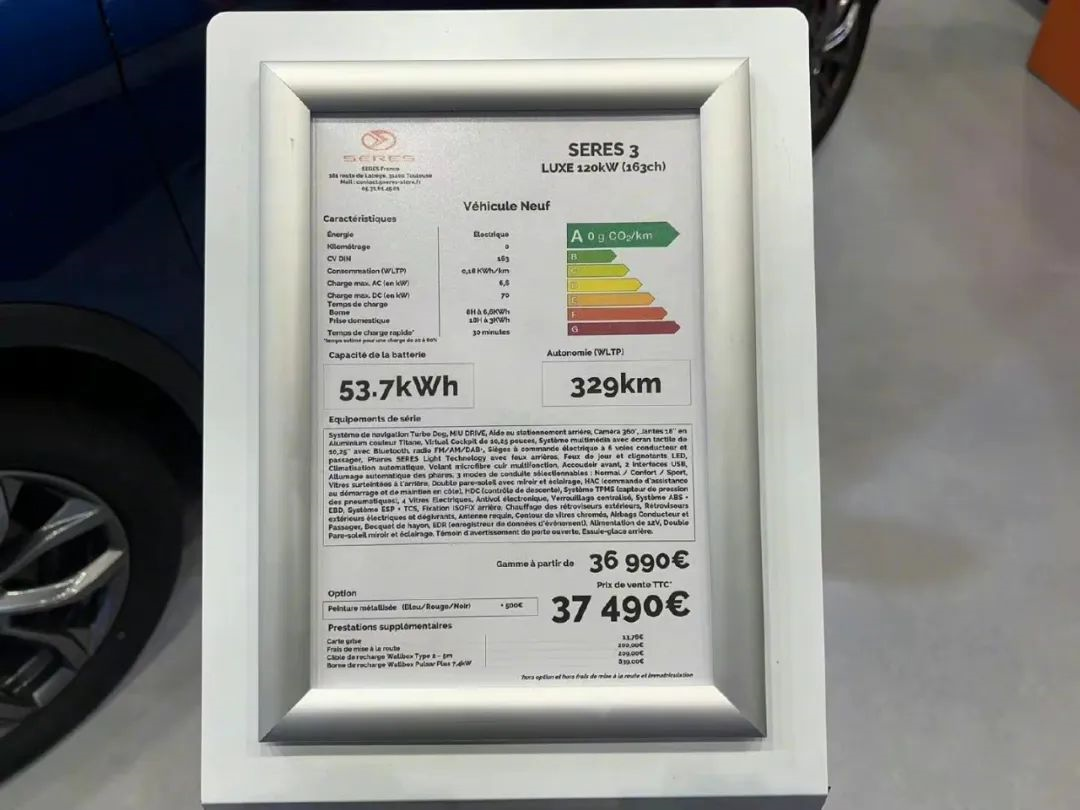
In addition, other car models exhibited by the two brands have not revealed more specific information or specific plans for sales in Europe. However, for these two brands that have not been out of the country for a long time, appearing more frequently at such international auto shows has a very positive effect on increasing the brand’s international visibility and future entry into the European market.
After experiencing the Zero Run T03 at the auto show, a foreign netizen expressed his love for this small car on social media.
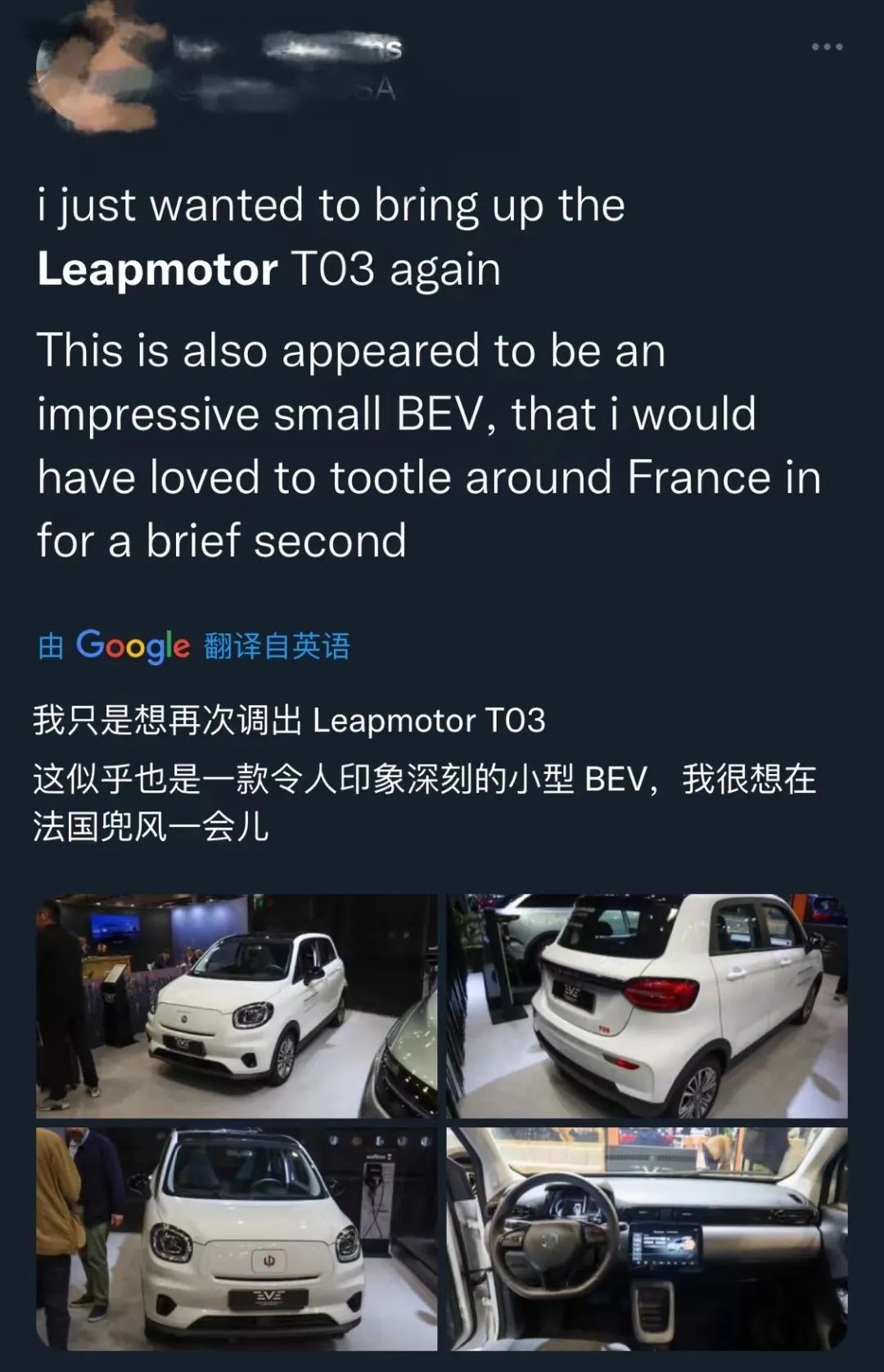
Chinese brands have great potential!
After a four-year hiatus, this year’s Paris Auto Show attracted not only people in the automotive industry and consumers, but also many celebrities and politicians, including French President Macron.
On the day of Macron’s attendance at the auto show, the French newspaper, Le Echoes, published a special interview with him. In the interview, Macron believed that more support should be given to Europe’s electric vehicle industry and market.
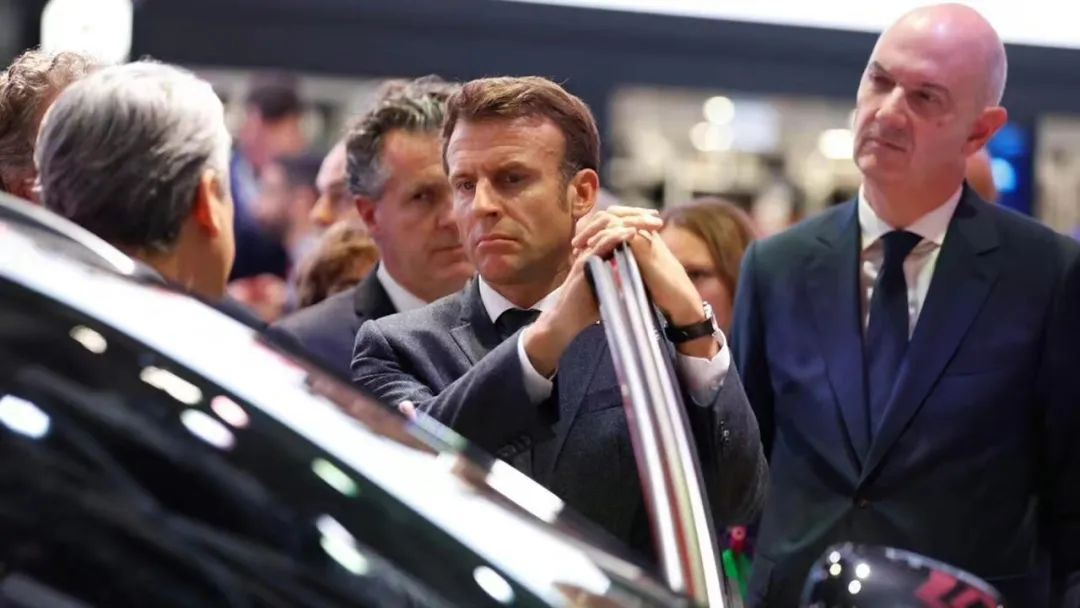
He noticed that currently, 80% of electric cars purchased by the French are imported models, and many European car rental companies are purchasing Chinese new energy vehicles, with Chinese brands already occupying 10% of the electric vehicle market share in Europe.
In response, he stated, “Facing competition from the United States and China in the field of electric vehicles, Europe must awaken and take strong action to respond. In this regard, I strongly support Europe prioritizing and strongly supporting the automobile industry. We must persevere in this and achieve it as soon as possible.” He hopes that French consumers will spend their money on electric cars manufactured in Europe.
Turning back to the auto show, a photo of Macron contemplating while visiting the BYD booth quickly spread in China. Many netizens found Macron’s expression while visiting the BYD booth to be thoughtful.
During the car exhibition, he reiterated to the media on site that “by 2030, French electric vehicle production capacity will reach 2 million units, and by 2035, all cars produced in France will be electric models.”
In fact, in addition to the four Chinese brands debuted at this year’s Paris Auto Show, new Chinese “car-making” brands such as NIO and Voyah have recently launched new models in the European market. In the field of new energy, the two giants of the fuel car era in Japan and Europe are clearly at a disadvantage in the process of electrification in the face of China and the US’s strong advantages in the entire industry chain.
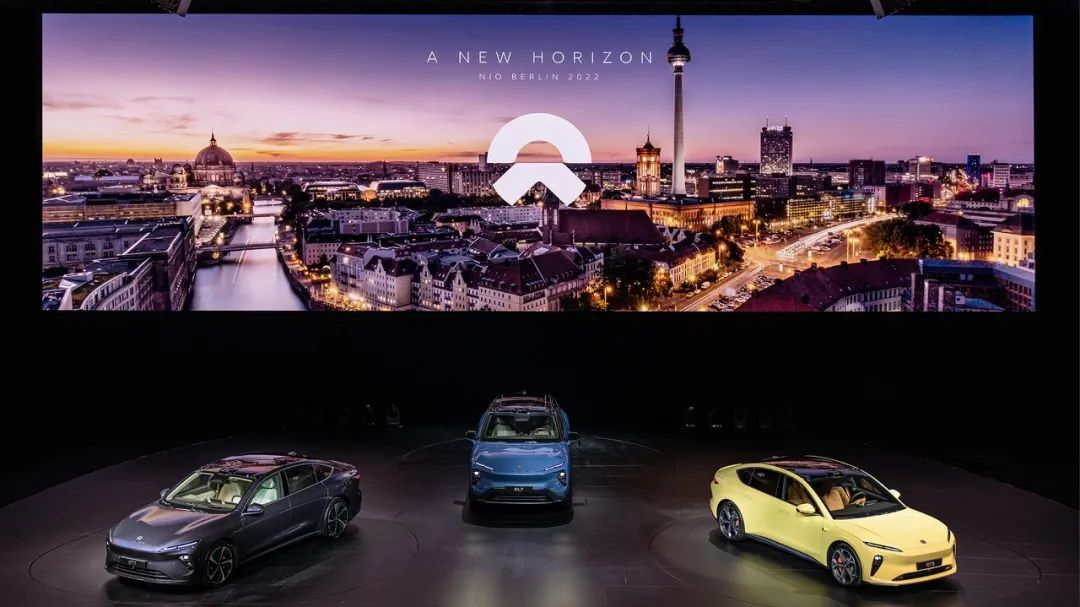
Especially for Chinese car companies with a huge domestic market, the penetration rate of new energy passenger cars in China has exceeded 30% in September, reaching 31.8%. Wholesale sales of new energy passenger cars from January to September reached 4.341 million units. It can be said that with a strong domestic market demand and a “first-mover” international market image, the current international development environment of the Chinese automotive industry is better than at any other time.
From learning from others everywhere and exchanging market for technology to painstakingly exploring growth, today we are already among the world’s leaders in the field of new energy, especially electric vehicles, and can even lead the global automotive industry trend to a certain extent. Looking back at the twists and turns of the development of our automotive industry over the past 70 years, it can be said that “the road ahead is long and lined with hardships, but, starting anew, we shall scale the heights”.
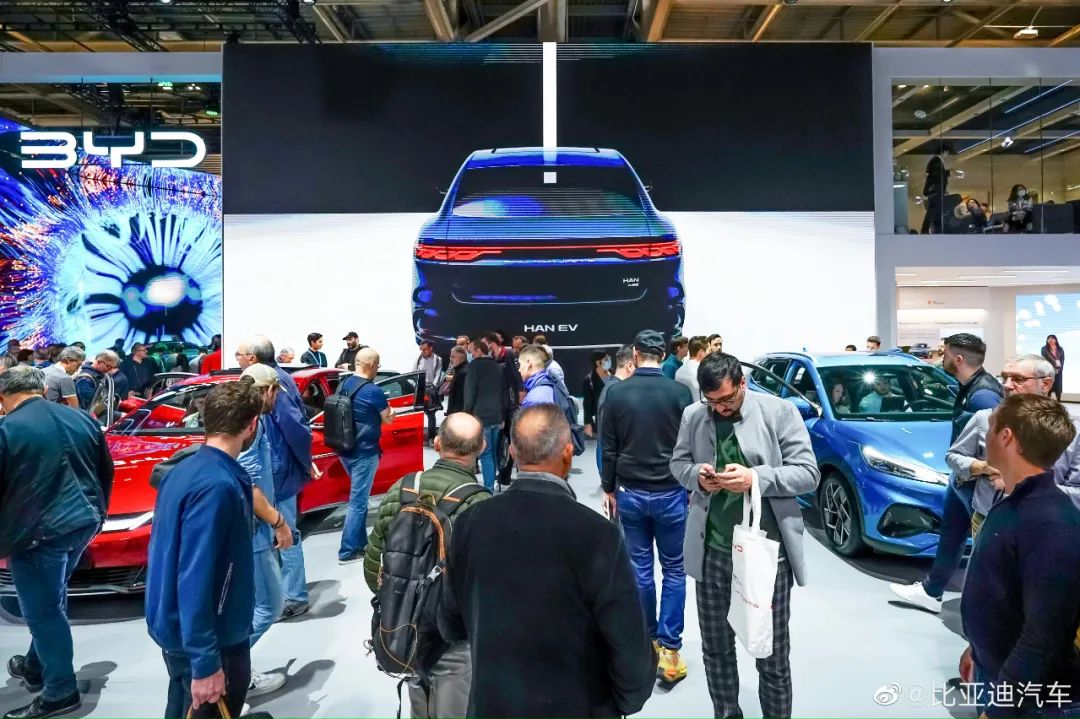
Although for many people, the current advantage of Chinese brand new energy vehicles in the international market is not yet clear.
But I firmly believe that as long as we seize this rare opportunity and step out of the domestic market to gradually enter the markets of traditional developed countries, Chinese new energy vehicles will surely have their own place in the future international automotive market. Even more importantly, we will have our own international discourse power in the field of new energy cars!
This article is a translation by ChatGPT of a Chinese report from 42HOW. If you have any questions about it, please email bd@42how.com.
